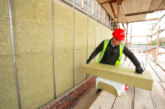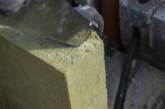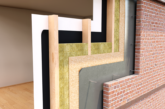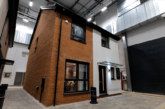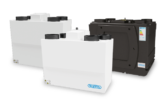Dan Greatrex, manager of online builders’ merchant Insulation Superstore, explains how choosing the most appropriate products for your project can help address any inefficiencies in the building envelope.
Whether you are building a home or buying one, energy is a hot topic and with more homeowners desiring low carbon footprints as well as low energy bills, creating a well-insulated building is more important than ever.
All properties lose heat through the building fabric: the challenge is to reduce this as much as possible, which means that roofs, floors and walls all require attention – and insulation. The thermal performance of insulation can be measured by the U-values they can achieve and generally speaking, the lower the U-value, the more heat that is retained.
It’s important to take a holistic approach to improving the energy-efficiency of a home and so it may be appropriate to look at installing insulation to as many areas as possible. It therefore makes good financial, and environmental, sense to choose an product that can be used for more than one area.
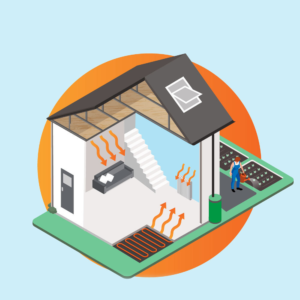 Get on board
Get on board
Traditional board insulation remains a popular choice owing to its cost-effectiveness, versality and low thermal conductivity. Polyisocyanurate (PIR) boards are great all-rounders and can be used for a variety of applications including roofs and walls. Thanks to its high compression value, it can also be used as under floor insulation although it’s not suitable for rooms with heavy loads such as garages. An extra benefit is that the design of PIR boards typically includes a foil face to provide extra protection against moisture.
Insulation boards constructed using phenolic foam are also a great choice for projects where insulation is required in multiple areas as they can be effectively used to insulate floors, roof space and both solid and cavity walls. Although a usually a little more expensive that PIR board insulation, phenolic foam performs better and is great if you want to achieve low U-values but are limited in terms of space.
Floor it
It’s usually only necessary to insulate at ground floor level but it’s worth considering adding insulation to any floors that are directly above any unheated spaces such as a garages or storerooms to prevent additional heat loss. Polystyrene boards are a good choice for under floor applications and it’s worth looking at their kPa rating which indicates how well the insulation can withstand extremely high pressure. The higher the rating, the more suitable the product will be for use under house foundations, in garages or for commercial or mixed-use buildings.
In older properties where access to the floor joists may be more of a challenge, the use of a flexible product like mineral wool insulation which as it is formed in slabs rather than boards, is much easier to handle and work with. This type of insulation is also a great fit for multi-storey properties and it can be used to insulate floors in between individual dwellings, such as flats and apartments, to not only reduce heat loss but also to limit noise transmission. As well as offering great acoustic performance, the best mineral wool insulation also offers fire resistance for added peace of mind.
For projects where specific U-values need to be met and where budgets allow, one of the most effective types of floor insulation available is the vacuum sealed variety. This type of insulation is typically much slimmer than other more traditionally-constructed products but has a very low thermal conductivity. It’s usual regarded as a bespoke solution as it has to be made to order and as a result, is usually more expensive.
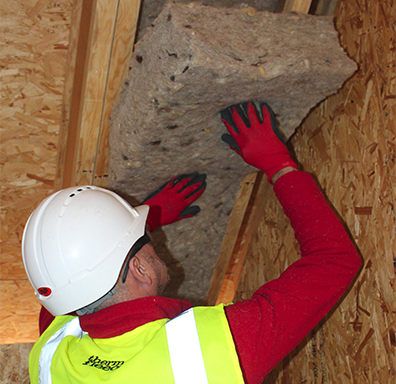 Climate control
Climate control
A key focus on insulation is understandably its ability to help a property retain heat but it’s also important to consider what happens when outside temperatures begin to rise. Often referred to as ‘space blanket’ insulation, multi-foil insulation is efficient at not only keeping your home warm during winter, but cooler during summer. By using multiple layers of aluminium foil (hence the name) it works by reflecting heat back into its source and it can be effectively used to insulate walls, roofs and floors. The heat loss isn’t subject to the same diminishing returns as traditional insulation, however it’s worth noting that you will need to consider an extra 25mm of space either side of the insulation for it to perform at its best.
Natural choices
Insulation can not only improve the energy-efficiency of a property but can also help reduce its overall carbon footprint and for projects that have stringent environmental targets, there is the option of using products made from naturally-sourced or sustainable materials such as wool, hemp and recycled plastics.
Although the thermal performance of this type of material is not as competitive as others, it does offer a wide range of benefits and is suitable for use in walls, floors and to insulate loft spaces. Wool insulation for example has a natural fire resistance owing to the moisture in the fibres preventing it from igniting easily. It’s also easy to work with and can help reduce humidity and even absorb some atmospheric pollutants to help purify the air that enters a home.
All wrapped up
Set against a backdrop of rising energy costs and global climate change, the demand for homes that are more efficient by design has been a key focus of the housebuilding industry for many years but in many ways, this has also broadened the divide between the performance of new and existing houses. The Government is attempting the address this imbalance with launch of the new Green Homes Grant scheme which aims to subsides various low-carbon and energy-efficiency improvements across eligible homes and properties across the country. As one of the merchants involved in the scheme, we understand that there isn’t a ‘one fits all’ solution when dealing with housing stock of different ages, sizes and condition which is why we work closely with our customers to identify the most appropriate type of insulation for their projects and their budgets.


